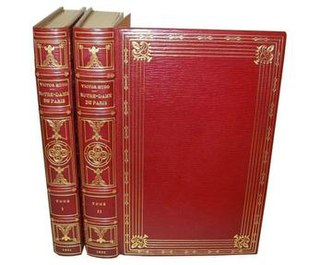
The Hunchback of Notre-Dame is a French Gothic novel by Victor Hugo, published in 1831. The title refers to the Notre-Dame Cathedral, which features prominently throughout the novel. It focuses on the unfortunate story of Quasimodo, the Roma street dancer Esmeralda and Quasimodo's guardian, the Archdeacon Claude Frollo, in 15th-century Paris. All its elements—the Renaissance setting, impossible love affairs, and marginalized characters—make the work a model of the literary themes of Romanticism.

Frederick George Hobson, known as Fred Leslie, was an English actor, singer, comedian and dramatist.
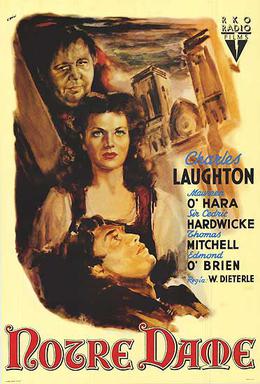
The Hunchback of Notre Dame is a 1939 American romantic drama film starring Charles Laughton and Maureen O'Hara. Directed by William Dieterle and produced by Pandro S. Berman, the film is based on Victor Hugo's 1831 novel. The film is also noted for being the first film ever shown at the Cannes Film Festival before the rest of the festival was cancelled due to the start of World War II.

Clopin Trouillefou is a fictional character first created in the 1831 novel The Hunchback of Notre-Dame by French author Victor Hugo, and subsequently adapted.

Pierre Gringore was a popular poet and playwright during the Renaissance in France.
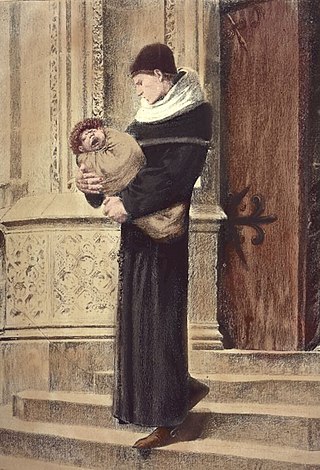
Claude Frollo is a fictional Christian clergyman and the primary antagonist of Victor Hugo's 1831 novel The Hunchback of Notre-Dame. He is also an alchemist, Renaissance humanist, and intellectual. In his decision to choose a Roman Catholic priest as the primary villain of his novel, Hugo was very much under the influence of the anti-religious currents of the Enlightenment.
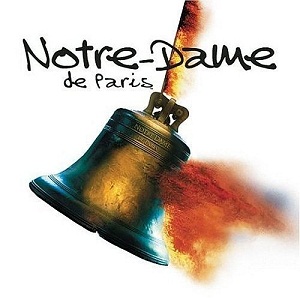
Notre-Dame de Paris is a sung-through French musical which debuted on 16 September 1998 in Paris. It is based upon the novel Notre-Dame de Paris by the French novelist Victor Hugo. The music was composed by Riccardo Cocciante and the lyrics are by Luc Plamondon.

Esmeralda, born Agnès, is a fictional character in Victor Hugo's 1831 novel The Hunchback of Notre-Dame. She is a French Roma girl. She constantly attracts men with her seductive dances, and is rarely seen without her clever goat Djali. She is around 16 years old and has a kind and generous heart.
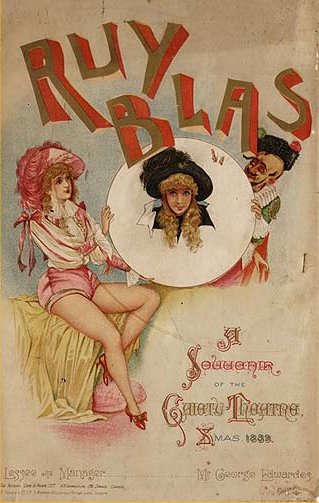
Ruy Blas and the Blasé Roué is a burlesque written by A. C. Torr and Herbert F. Clark with music by Meyer Lutz. It is based on the Victor Hugo drama Ruy Blas. The piece was produced by George Edwardes. As with many of the Gaiety burlesques, the title is a pun.

Cinder Ellen up too Late is a musical burlesque written by Frederick Hobson Leslie and W. T. Vincent, with music arranged by Meyer Lutz from compositions by Lionel Monckton, Sidney Jones, Walter Slaughter, Osmond Carr, Scott Gatti, Jacobi, Robertson, and Leopold Wenzel. Additional lyrics were written by Basil Hood. The show was a burlesque of the well-known pantomime and fairy tale, Cinderella.
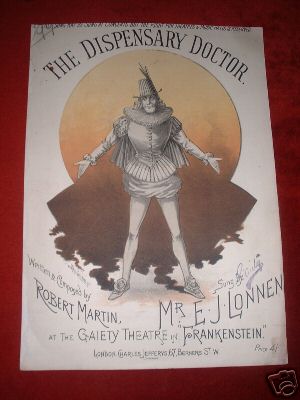
Frankenstein, or The Vampire's Victim is a musical burlesque in three acts written by Richard Henry. The music was composed by Meyer Lutz. The piece is a burlesque loosely based on the 1818 Mary Shelley novel Frankenstein; or, The Modern Prometheus and the Adelphi Theatre drama based on the novel.

Faust up to Date is a musical burlesque with a libretto was written by G. R. Sims and Henry Pettitt, and a score written by Meyer Lutz. Set in Nuremberg, it is a spoof of Gounod's opera, Faust, which had first been performed in London in 1864. The burlesque followed on from an earlier Lutz musical, Mephistopheles, or Faust and Marguerite.

Ellen "Nellie" Farren was an English actress and singer known for her roles as the "principal boy" in musical burlesques at the Gaiety Theatre in London. For a quarter of a century there, she was "the best-known star of London burlesque".

Little Jack Sheppard is a burlesque melodrama written by Henry Pottinger Stephens and William Yardley, with music by Meyer Lutz, with songs contributed by Florian Pascal, Corney Grain, Arthur Cecil, Michael Watson, Henry J. Leslie, Alfred Cellier and Hamilton Clarke. The comedy lampooned the serious plays based on the life of Jack Sheppard, especially the popular 1839 play by John Buckstone, which was in turn based on the novel of that year by William Harrison Ainsworth.
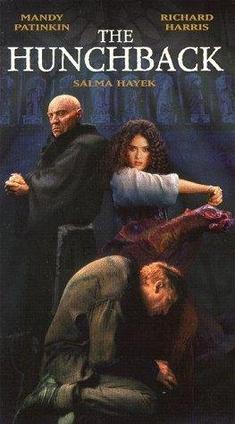
The Hunchback is a 1997 made-for-television romantic drama film based on Victor Hugo's iconic 1831 novel The Hunchback of Notre-Dame, directed by Peter Medak and produced by Stephane Reichel. It stars Richard Harris as Claude Frollo, Salma Hayek as Esmeralda and Mandy Patinkin as Quasimodo, the titular hunchback of Notre Dame. The film premiered on March 16, 1997, on TNT.

Carmen up to Data is a musical burlesque with a score written by Meyer Lutz. Set in Seville, the piece was a spoof of Bizet's 1875 opera Carmen. The libretto was written by G. R. Sims and Henry Pettitt.

The Hunchback of Notre Dame is a British feature length adaptation of the 1831 novel by Victor Hugo, produced for television by the BBC in 1976 and aired on December 30 the same year. Directed by Alan Cooke and written by Robert Muller, the film stars Kenneth Haigh as Claude Frollo, Warren Clarke as Quasimodo and Michelle Newell as Esmeralda, and features the visual effects by Ian Scoones and the original music by Wilfred Josephs.

The Hunchback of Notre Dame is a 1986 Australian/American fantasy animated film and an adaptation of the 1831 novel The Hunchback of Notre-Dame by Victor Hugo.

Esmeralda is an opera in four acts composed by Arthur Goring Thomas to an English-language libretto by Theo Marzials and Alberto Randegger based on Victor Hugo's 1831 novel The Hunchback of Notre-Dame. It premiered in London on 26 March 1883 at the Theatre Royal, Drury Lane with Georgina Burns in the title role and Barton McGuckin as her lover, Phoebus.

Monte Cristo Jr. was a Victorian burlesque with a libretto written by Richard Henry, a pseudonym for the writers Richard Butler and Henry Chance Newton. The score was composed by Meyer Lutz, Ivan Caryll, Hamilton Clarke, Tito Mattei, G. W. Hunt and Henry J. Leslie. The ballet and incidental dances were arranged by John D'Auban, and the theatre's musical director, Meyer Lutz, conducted. The play's doggerel verse was loosely based on The Count of Monte Cristo by Alexandre Dumas.




















